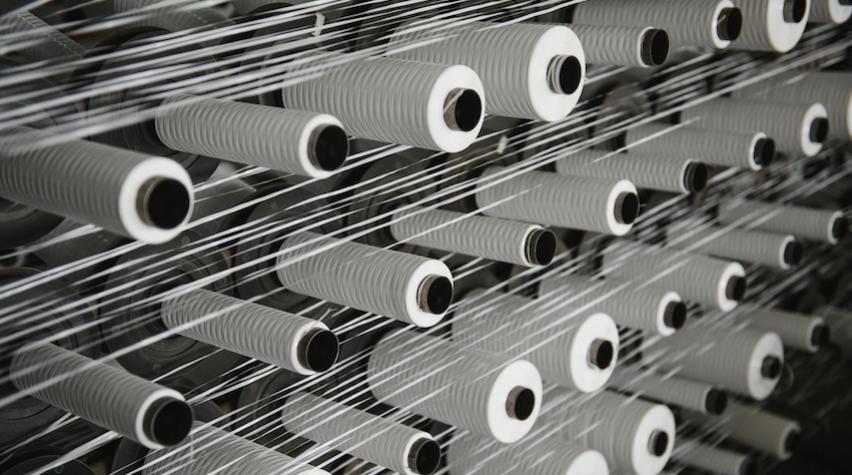
On a day-to-day basis, one of the first things we do when we get out of bed in the morning is decide what to wear for the day. It is one of the ways we express and protect ourselves. Whether it’s moisture-wicking workout clothes for a quick jog or a Gore-Tex rainjacket in case the grey clouds result in a downpour, this process takes only a small portion of your day. Unbeknownst to many, the fashion industry — more specifically, the textile industry — heavily relies on science and engineering, especially for high-tech or performance fabrics. Many of the textiles you wear each day have been engineered or developed in some way by a chemical engineer. Engineers play a vital role in the textiles industry, from well before an article of clothing is stitched together, to what happens at the end of the garment’s lifecycle.
Textile engineering
Starting from the most visible part of the garments we wear, chemical engineers are involved in the engineering and production of textiles, particularly when it comes to developing smart or advanced textiles. These materials have unique properties that make them useful for a variety of applications, including protective clothing, medical devices, wearable electronics, and energy-harvesting systems. Chemical engineers are also leading the development of new dyes and finishes for textiles. They may create dyes that change color based on environmental conditions, such as temperature (thermochromic), light (photochromic), or pH level, or develop coatings that can repel water or protect against ultraviolet (UV) radiation. Photochromic clothing can be used to detect the presence of UV radiation and to create light-induced camouflage for military apparel (1). Smart textiles for medical applications can be used to continuously monitor patient vitals by incorporating built-in sensors, which can also help provide precise patient diagnoses (2).
Another area where chemical engineers are involved is in the development of new fibers. Many of these new fibers could be sustainable alternatives to materials that may be environmentally detrimental to source. Biotechnology company Bolt Threads has been able to create sustainable silk using a yeast-based process and leather alternatives using mycelium — the root-like system produced by mushrooms. The company has also partnered with brands to use its leather alternative, Mylo, in shoes and bags that are already in stores. The process is inherently cruelty-free and produces far fewer greenhouse gas emissions than farming cattle. Innovative solutions like these can help society become more environmentally conscious without sacrificing the various materials and textures that we have come to love.
Circularity and recyclability
In the textile industry, chemical engineers develop new materials and processes that promote sustainability and reduce waste, primarily through circularity and recyclable materials. Circularity refers to the idea of creating a closed-loop system where products are reused, repaired, or regenerated instead of being discarded as waste. In the textile industry, this means finding ways to create fabrics that can be easily disassembled and recycled into new materials without losing quality or functionality. For example, certain biodegradable polymers can be used as a substitute for traditional fabrics — but they can be broken down into their constituent parts and reused in the production of new textiles. Many companies are taking part in the initiative to create such circular systems, such as Tereform, a Denver-based start-up that is developing a novel technology to break down waste textiles, such as polyester, into powdered monomers that can be reused.
Wastewater treatment
During the textile processing phase, synthetic dyes and pigments are often used to color fabrics. However, many of these substances can be harmful if released into the environment without proper treatment, negatively impacting human and environmental health. Chemical engineers work closely with textile companies to develop wastewater treatment systems that remove pollutants from water before discharging it back into rivers or lakes. They employ a variety of techniques, including filtration, sedimentation, and chemical precipitation, to separate solids and liquids in the wastewater stream.
One common method used for treating textile industry wastewater involves adding coagulants such as Al3+-based and Fe3+-based salts to the water (3). These substances bind with pollutants like dyes, pigments, and other organic compounds, forming larger particles that can be easily separated from the water through filtration or sedimentation processes.
The finished piece
The next time you are shopping for a new outfit, remember that chemical engineers were likely involved in the creation of the textiles for many of the articles of clothing you see on the racks. Whether it’s for sustainability, circularity, or performance, we continue to have an impact on the fashion industry. When you see a grey cloud looming in the sky, remember that you’re wearing innovation to keep you dry.
1. Ahmed, H., et al., “Preparation of Photochromic and Photoluminescent Nonwoven Fibrous Mat from Recycled Polyester Waste,” Journal of Polymers and the Environment, 30, pp. 5239–5251 (Sept. 29, 2022).
2. Zaman, S. u., et al., “Smart E-Textile Systems: A Review for Healthcare Applications,” Electronics, 11 (1), #99 (Dec. 29, 2021).
3. Lin, J., et al., “Environmental Impacts and Remediation of Dye-Containing Wastewater,” Nature Reviews Earth & Environment, 4, pp. 785–803 (Oct. 26, 2023).
This article originally appeared in the Emerging Voices column in the January 2024 issue of CEP. Members have access online to complete issues, including a vast, searchable archive of back-issues found at www.aiche.org/cep.

